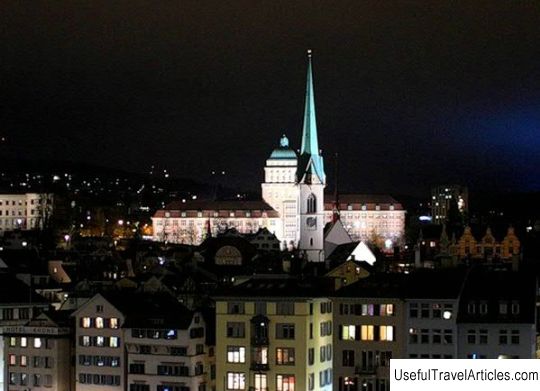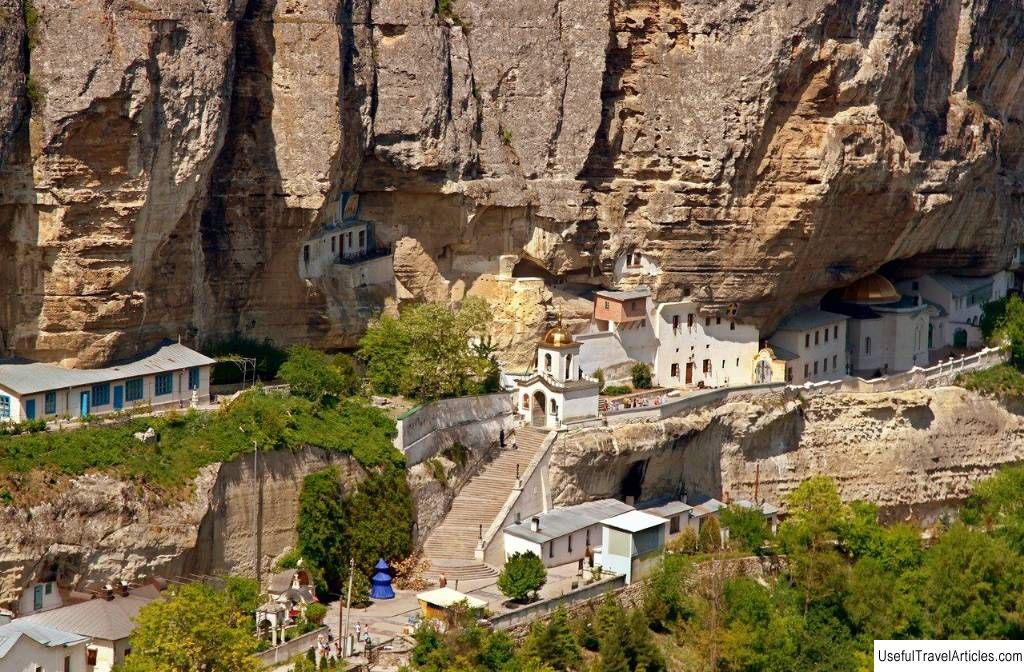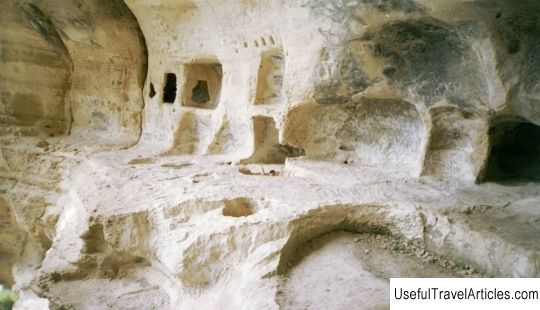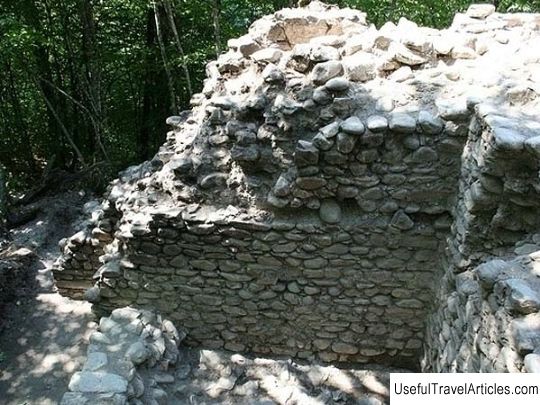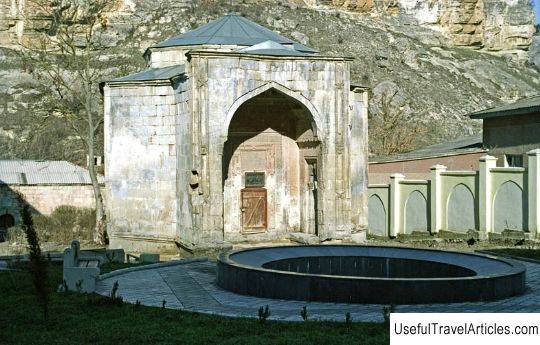Chufut-Kale description and photo - Crimea: Bakhchisarai
Rating: 7,5/10 (100 votes) 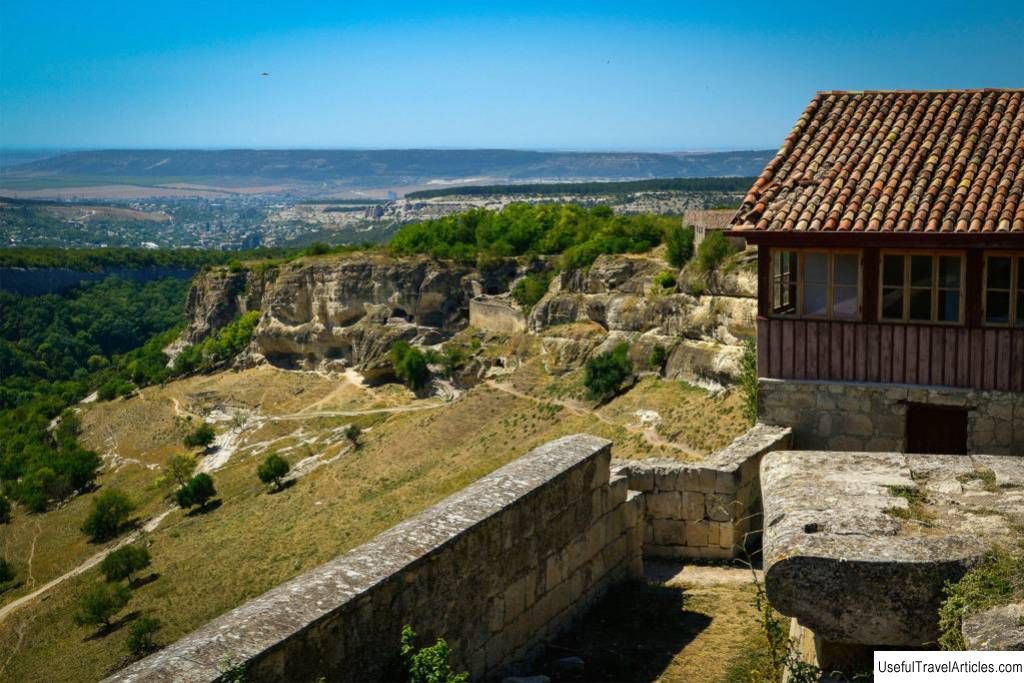
Chufut-Kale description and photo - Crimea: Bakhchisarai. Detailed information about the attraction. Description, photos and a map showing the nearest significant objects. Photo and descriptionChufut-Kale is the largest and most interesting of the Crimean cave cities. Once there was the capital of the Crimean Khanate , then there lived representatives of the most mysterious people of Crimea - Karaites . Here you can see the remains of a medieval fortress, Muslim and Karaite temples, city buildings and numerous cave structures carved into the rock. PrehistoryFortified cities in these places began to emerge in IV-V centuries . The tribes of Alans and Goths who came here in previous years, mixed and formed their own culture. They preferred to live not on the coast, but in the mountains and built cave fortresses using the natural features of the Crimean limestone mountains. The fortress, which is now called Chufut-Kale, was built by the Byzantines who came here on the site of the former Alanian . It became part of a large system of mountain fortifications that protected the northernmost borders of the Byzantine Empire. We do not know what the city was called then. According to some versions, the mysterious city of Fulla - the residence of the Crimean bishop, was located here. There are numerous references to him, but no one knows where he was. There are 15 versions of the location in total. Some scientists call the northernmost Byzantine cave city located nearby - Baklu. But according to other versions, Fulla was right here. This fortress was larger and much more heavily defended from attack. The first historical name of the fortress - Kyrk-Er - belongs to the Polovtsy. Polovtsi, or Kypchaks , came here in the XI century, and it is their language that underlies the modern Crimean Tatar. The fortress did not belong to the Polovtsians for long. In the middle of the XIII century, the Golden Horde came here. The land now officially belonged to Jochi Khan , the eldest son of Genghis Khan and his offspring. However, formally, the Crimean Khanate was independent, it was simply obliged to pay a considerable tribute to the Horde. The local population made attempts to free itself, rebelled, and the Horde made numerous devastating raids here. The worst of them took place in 1299 , when the troops of Khan Nogai broke into Crimea. He sent his grandson to the Crimea to collect tribute, but the grandson was killed. In response, Nogai almost completely ravaged Crimea, and many cities and fortresses after that simply ceased to exist. The capital of the khanate and the prison Kyrk fortress -Er is not just preserved. It was the most powerful fortress in these places, and it was she who became the new capital of the Crimean Khanate. The prosperity of the fortress at this time is associated with the name of Khadzhi the First , the founder of the Giraev dynasty (or Gireyev, as it was customary to call them in Russia). He was a distant descendant of Genghis Khan , but was born in Lithuania - his father fled to there in the midst of another Crimean turmoil. Haji Girai enlisted the support of the Lithuanian prince Vitovt and in 1428 seized power, founding his own state, independent of the Horde. The struggle for power lasted almost 20 years: fearing to exacerbate relations with the Golden Horde, the Lithuanian princes either supported the Crimea or recalled it. Haji Girey even spent several years in Vilna (now Vilnius) as an honored guest, and in fact - a hostage prisoner. But in 1441 the Lithuanian prince officially approved him as the Crimean khan. The Kyrk-Er fortress became the new capital. Here, almost immediately, they began to mint their own coins. Haji Giray was one of the most popular rulers among the people; he received the nickname Melek - "Angel". Then in Kyrk-Er there were more than 500 large estates, cave fortifications, mosques . But rather quickly the city ceased to be the capital - it was moved to Bakhchisarai. The fortress began to be used as a prison for keeping noble and important captives and hostages. For example, here in the 16th century was kept close to Tsar Ivan the Terrible Vasily Gryaznoy . He was captured on the borders of the Khanate and the Tatars demanded a huge ransom for him in ten thousand rubles. At the time, it was a tremendous amount. Correspondence with Tsar Ivan the Terrible lasted for several years, until finally Vasily Gryaznoy was finally released - already for two thousand rubles. About a hundred years later, Russian prisoners Vasily Sheremetev and Andrei Romodanovsky were held here. Russia then waged a war against the Commonwealth, and the Crimean Khanate traditionally supported the Polish-Lithuanian troops against Russia. The commander of the Russian troops, Vasily Sheremetev, was captured and spent twenty-one years in prison in the fortress. Andrey Romodanovsky spent more than ten years here, also captured after one of the battles in this war. They were released only after the conclusion of a peace agreement in 1681. Karaites During these years the fortress changed its name. Now it is called "Chufut-Kale" - "Jewish fortress" . Gradually, it becomes the center of a large community of Karaites. The origin of the Karaites, a special people who speak the Turkic language, but profess one of the variants of Judaism, is still a mystery . Some scholars consider them to be direct relatives of the Semites, while others insist that this people is a descendant of the Khazars who once converted to Judaism. There is no unity among the Karaite leaders themselves either, some sharply oppose themselves to traditional Jews, while others, on the contrary, insist on rapprochement. One way or another, in the Crimea in the 15th-18th centuries there was a large Karaite diaspora, which, in its customs and religion, differed both from the local Muslim Tatars and from the Orthodox Greeks. Karaites worship the Old Testament, Jesus and Mohammed are recognized as prophets. Their temple is called " kenasa ". Several such kenasas can now be seen on the territory of Chufut-Kale. Noble Karaites served in the khan's army and constituted the main garrison of the fortress, they also controlled the mint. A large Karaite cemetery - Balta-Tiimez has grown not far from the city. However, like other non-Muslims, the Karaites were subject to legal restrictions - for example, they were not allowed to settle in the capital of the khanate, Bakhchisarai, although they conducted their main trade there. Life in the city was not easy, primarily due to the fact that the growing population did not have enough fresh water from a few sources. Farming on the rocks was difficult. Mostly artisans lived here. With the annexation of Crimea to Russia, restrictions on Karaites living in Bakhchisarai were canceled. And then the city began to rapidly empty: the Karaites moved to Bakhchisarai and to the seaside towns. In the 19th-20th centuries, Evpatoria became their spiritual center. In the 19th century, they were quite numerous and were respected by the royal family. Now this community still exists in Crimea, but it is on the verge of extinction. According to the latest census, there are a little more than five hundred people left. The fortress now The most interesting thing to see here is the remains of a defensive wall . This is the oldest building in the city - it is about one and a half thousand years old. Other fortifications have also been preserved: later walls, gates, a moat, dry wells. The gateway tower of the 17th century - Biyuk-Kapu is completely preserved. But the most interesting thing is, of course, cave fortifications in the rock . In total, there are more than one hundred and fifty caves of various shapes and purposes. Basically, there were either outbuildings or military fortifications in the caves; they preferred to live in houses in the Middle Ages. The caves are connected by numerous passages and tunnels. From the period of the Crimean Khanate, remains of a mosque . We know the exact year of its construction - 1346th. Its architecture has Byzantine elements, so many assume that it was once converted from a Christian temple. There is a Muslim cemetery not far from the mosque. The largest and most beautiful building here is the octagonal mausoleum of Tokhtamysh's daughter Dzhanyke-khanym . In the gravestone inscription, she is called “the great empress”. The mausoleum dates back to the 15th century. It stands on the very cliff, and offers a beautiful view of the surroundings. Since the time of the Karaites, two kenases have survived - the XIV century and the XVIII century, and the remains of the city buildings of the XVIII century The city has a clear breading: three large streets and numerous side streets. Some houses have preserved the names of the owners. In one of the houses in Chufut-Kale lived the famous Karaite scholar Avraham Firkovich . At the end of the 19th century, he turned out to be almost the only inhabitant of the abandoned city - and he tried to save it from destruction. Firkovich collected a large collection of Hebrew and Karaite manuscripts. It is now stored in St. Petersburg. After his death, the city rangers continued to live in this house. This is a typical Karaite house, from which one can judge how the whole city looked two or two hundred and fifty years ago. It was built in the 18th century, but remained residential until the beginning of the 20th, and was restored in the 60s. Now there is a Karaite cultural center and a small museum dedicated to the culture and life of the Karaites. Interesting factsIn the 19th century, Karaites took over the tobacco industry. For example, the famous Dukat factory was the property of the Karaite I. Pigit. And he also owned the house on Bolshaya Sadovaya, in which the writer Mikhail Bulgakov lived in the 1920s. Now in this house there is a famous museum dedicated to Bulgakov. In Chufut-Kala, they filmed military episodes of the film "Pan Volodyevsky" in 1969, she appears in the frames of the film "Hearts of Three" 1992 and "It's Hard to Be God" 1989. In the classic fairy tale "Finist - the Clear Falcon", the warriors of the villain Kartaus are hiding in the caves of this city. Note
                  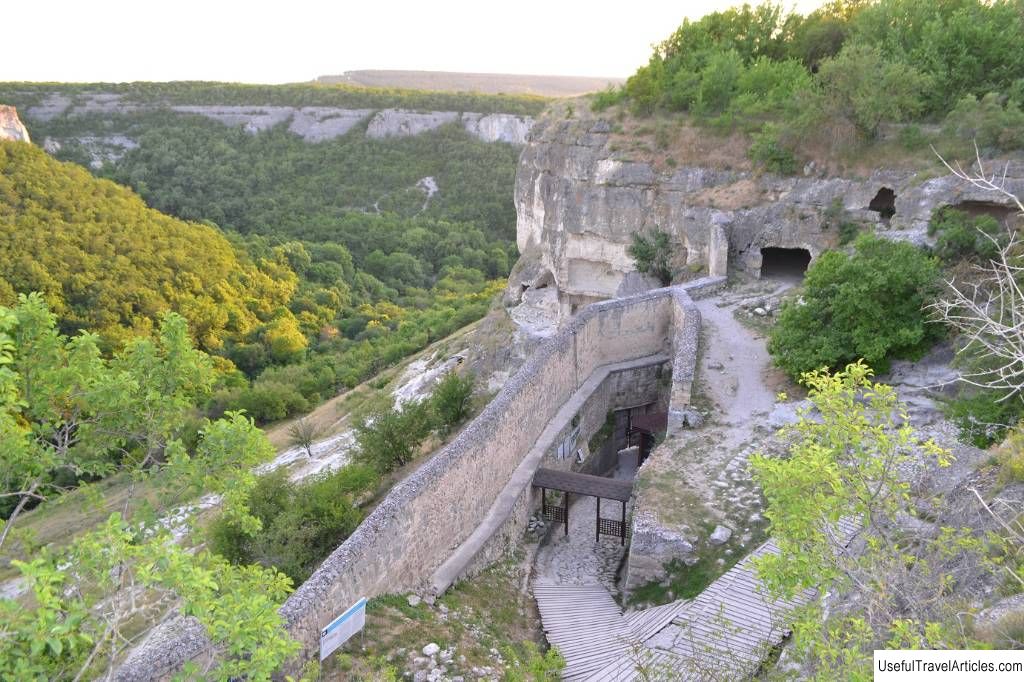  We also recommend reading Ethnographic complex ”Kulata” description and photos - Bulgaria: Kazanlak Topic: Chufut-Kale description and photo - Crimea: Bakhchisarai. |
